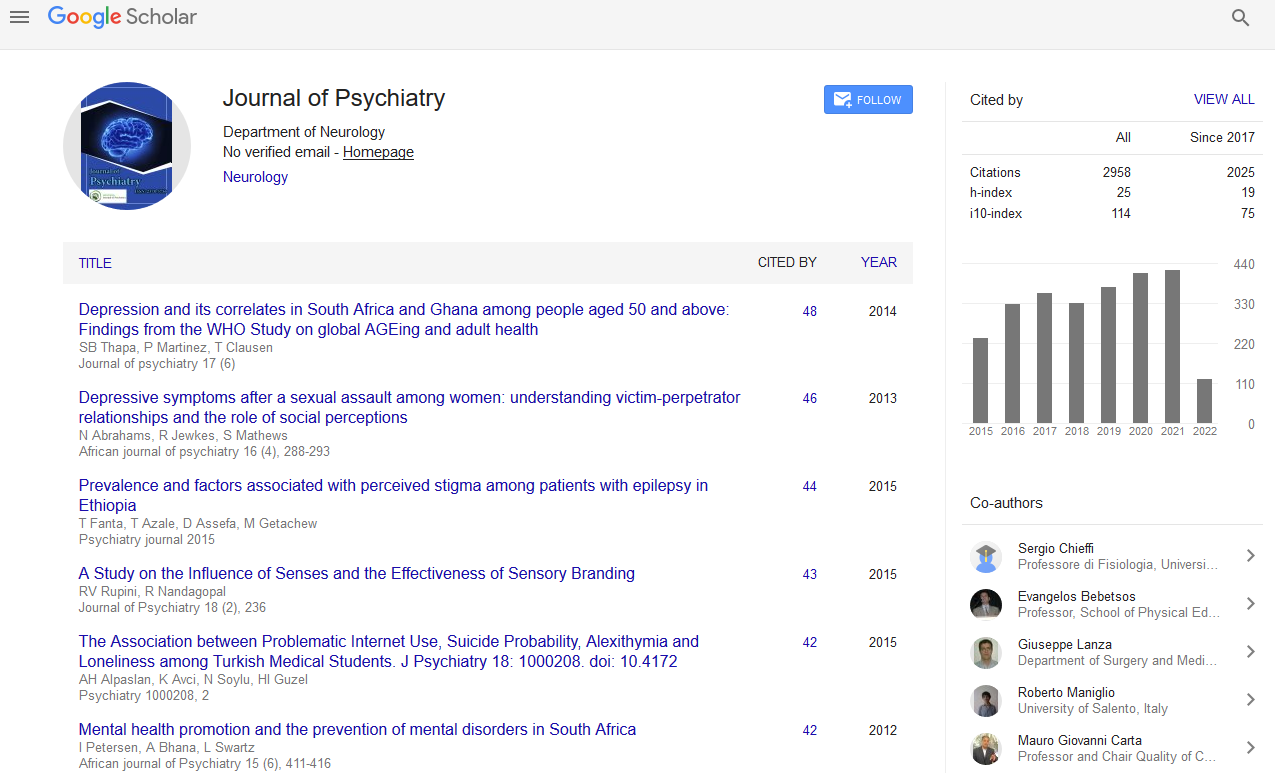PMC/PubMed Indexed Articles
Indexed In
- RefSeek
- Hamdard University
- EBSCO A-Z
- OCLC- WorldCat
- SWB online catalog
- Publons
- International committee of medical journals editors (ICMJE)
- Geneva Foundation for Medical Education and Research
Useful Links
Share This Page
Open Access Journals
- Agri and Aquaculture
- Biochemistry
- Bioinformatics & Systems Biology
- Business & Management
- Chemistry
- Clinical Sciences
- Engineering
- Food & Nutrition
- General Science
- Genetics & Molecular Biology
- Immunology & Microbiology
- Medical Sciences
- Neuroscience & Psychology
- Nursing & Health Care
- Pharmaceutical Sciences
Abstract
Prevalence of Depression and Anxiety and Associated Factors among Patients Visiting Orthopedic Outpatient Clinic at Tikur Anbessa Specialized Hospital, Addis Ababa, Ethiopia, 2017
Mengesha Srahbzu, Niguse Yigizaw, Tolesa Fanta, Dawit Assefa and Enguday Tirfeneh
Introduction: Orthopedic Trauma exerts a holistic influence on survivors’ physical health including a range of mental health problems which interfere with survivors’ recovery. Psychiatric disorders and behavioral disturbances are reported to be 3-5 times more common among people with injuries and are predictor of poor outcome and ongoing disability. Therefore, assessing depression and anxiety among orthopedic trauma patients play a vital role in implementing further interventions.
Methods: Institutional based cross-sectional study was conducted at Tikur Anbessa specialized hospital from May 29-June 30, 2017. Hospital anxiety and depression scale was used to assess anxiety and depression by using face to face interview. Systematic sampling technique was used to select a total of 407 participants. Data has been analyzed using SPSS 20. Bivariate and multivariate logistic regression was done to identify associated factors. Variables with p-value <0.05 have been considered as statistically significant.
Result: Prevalence of depression and anxiety were 36.1% and 39.8% respectively. Being female (AOR=2.3595%CI (1.48,3.72)), poor social support (AOR=2.5195%CI (1.30,4.85)), developing complication (AOR=1.9195%CI (1.07,3.52)), presence of amputation (AOR=3.6495%CI (1.60,8.24)) and having pain (AOR=2.0295%CI (1.24,3.30)) for depression and being female (AOR=1.9995%CI(1.11,3.57)), having chronic medical illness (AOR=3.0795%CI(1.36,6.92)), having family history of mental illness (AOR=2.24 95%CI (1.05,5.4.91)), lower extremity injury (AOR=2.93 95%CI (1.38,6.21)) and having severe pain (AOR=2.75 95%CI (1.32,5.74)) for anxiety had significant association at p–value <0.05.
Conclusion: Prevalence of depression and anxiety were high. Being female, having poor social support, developing complication, presence of amputation and having pain for depression; and being female, having chronic medical illness, having family history of mental illness, lower extremity injury and having severe pain for anxiety were significantly associated factors. It is good if clinicians give emphasis for orthopedic patients especially for females and with chronic medical illness.


